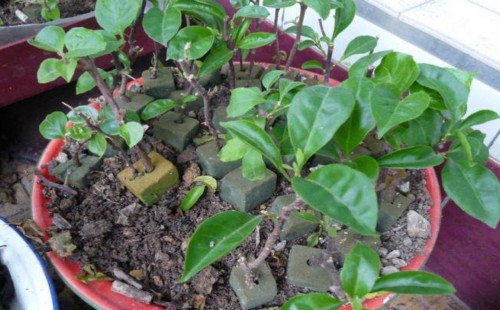Triangular plum cuttings note
Potted triangular plum has high ornamental value, especially at flowering stage, and in order to obtain high-quality potted seedlings, we generally adopt the way of cutting to breed young plants. Although the cutting method and process of triangulated plum are relatively simple, there are still some matters needing our attention, perhaps because we do not follow the standard process in the process of cutting, which will often lead to cutting failure.

Cutting is a common propagation method for many potted flowers and plants, especially succulent plants, which are more commonly used. As long as we can master this basic skill, we can often successfully breed the potted seedlings we want, so as to cultivate ornamental potted flowers and plants with high ornamental value. The same is true of triangulated plum, but in the process of cutting and breeding young plants, there are some points for attention that we need to take seriously.
1. The cuttings of triangular plum can be either hard branches or tender branches, but when using twigs as cuttings, do not cut too young branches, otherwise it will not be easy to survive. Generally choose semi-lignified green branches for cutting, so it is easier to root, and the survival rate will be higher.
2. Before cutting the branches, the scissors should be disinfected and sterilized to avoid harming the branches by using dirty knives to make cuttings. After all, cuttings need to be pruned and will leave wounds, which are easily invaded by germs.
3. When cutting branches, it is necessary to ensure that the cut is smooth and smooth, and it is best to put a knife in place to avoid tearing wounds, which is easy to cause damage to other tissues, thus affecting the survival of cuttings.
4. The branches as cuttings need to have a certain number of bud eyes and leaves, leaving two and a half leaves for large leaves and two leaves and more than one bud for small leaves. Removing excess leaves can reduce water evaporation, while retaining certain leaves can promote photosynthesis.
5. Cutting seedlings can receive scattered light before taking root and sprouting, and do a good job of ventilation and moisturizing at the same time. Gradually increase the light after root sprouting to promote photosynthesis, and if the air is too dry to spray more water, you can uncover the plastic film in the evening to ventilate.
6. After the cuttings survive, the cutting substrate should be kept moist in the early stage, and the air humidity should be kept at about 70%. After one month, the cuttings grow stably and can be watered gradually.
The above are several aspects that need to be paid attention to during the cutting of triangular plum, of course, the matters needing attention are not limited to this, and there are still some small details that we still need to do well. Only when we standardize and do meticulous cutting work, can we ensure the smooth survival and healthy growth of cutting seedlings.
Time: 2019-06-07 Click:
- Prev

The method of softwood cutting of Prunus mume
Potted triangular plum has a very high ornamental value, and cuttings are generally used to breed young plants. However, both hardwood cuttings and tender wood cuttings can be used in the cuttage of Prunus mume. In the previous article, the editor shared the hardwood cutting techniques of Triangle Plum.
- Next

How to maintain the triangle after germination
Bougainvillea generally uses cuttage means to breed young plants, and the survival rate is very high, as long as the maintenance conditions are appropriate, it can ensure that it can maintain healthy growth. However, the triangular plum is still very young after budding, and its vitality is relatively weak, especially its buds. Therefore, the maintenance and management of seedling stage is very critical.
Related
- Fuxing push coffee new agricultural production and marketing class: lack of small-scale processing plants
- Jujube rice field leisure farm deep ploughing Yilan for five years to create a space for organic food and play
- Nongyu Farm-A trial of organic papaya for brave women with advanced technology
- Four points for attention in the prevention and control of diseases and insect pests of edible fungi
- How to add nutrient solution to Edible Fungi
- Is there any good way to control edible fungus mites?
- Open Inoculation Technology of Edible Fungi
- Is there any clever way to use fertilizer for edible fungus in winter?
- What agents are used to kill the pathogens of edible fungi in the mushroom shed?
- Rapid drying of Edible Fungi

